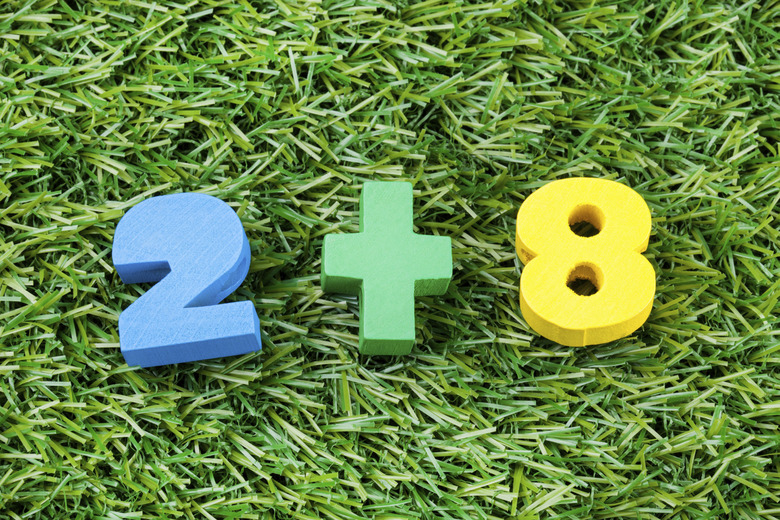Unifix Cubes Activities
Unifix cubes are colorful interlocking cubes that help children learn number and math concepts. Each cube represents one unit, and each has an opening on one side that allows it to connect to another cube. Unifix cubes are typically used in lower elementary grades, primarily kindergarten through third grade. Use a variety of Unifix cube activities to practice counting, sorting, comparing, addition, subtraction or multiplication. Manipulatives like Unifix cubes help make math ideas more concrete and can be especially helpful for students with learning difficulties.
Ways to Make a Number
Ways to Make a Number
Use Unifix cubes for simpler math activities in kindergarten or first grade. For example, choose a number no higher than 15, and ask children to use their cubes to show different ways to make that number. Children will need a variety of colors. To make 10, for example, students could connect nine red cubes and one yellow cube or seven green cubes and three white cubes; all cubes have the same value. Challenge students to think of all the possible combinations for the given number. This activity reinforces counting skills and helps children learn how to add using manipulatives.
Cube Subtraction
Cube Subtraction
Split the class into partners and give each partnership a small collection of Unifix cubes. Colors do not matter in this exercise. Each partnership also needs a large piece of construction paper or card stock, folded in half. Students must stand the paper upright in front of them. Partners will need to count the total number of cubes in the collection. Then one partner will close her eyes while the other hides some of the cubes under the paper. The other partner opens her eyes and guesses how many cubes are hidden. This activity helps children visualize subtraction.
Measurement
Measurement
Unifix cubes are helpful tools for early measuring activities, because they snap together and create a line to measure with. Assign a variety of objects of different lengths for students to measure with their cubes. Have them compare how many cubes are needed to measure a small object like a pencil and a larger object such as a desk. Students can also measure each other. A child will lie down on the floor in a straight line while a partner connects cubes alongside him from the base of his foot to the tip of his head. Create a classroom chart to show how many cubes tall each child is.
Comparing Numbers
Comparing Numbers
Children can begin learning to compare numbers using Unifix cubes to help visualize their differences. Choose two numbers and ask students to build the numbers with cubes. You can refer to the connected cubes as "cube trains." For example, if one of the numbers is five, students would connect five cubes to make a five-cube train. Cubes should be all the same color. Students will then choose a different color to build the second number. By lining up their two cube trains, they will be able to see which cube train is longer and which number is higher. Create worksheets with pairs of numbers students can compare using their cubes to help.
Cite This Article
MLA
Pancare, Rachel. "Unifix Cubes Activities" sciencing.com, https://www.sciencing.com/unifix-cubes-activities-12741826/. 21 July 2009.
APA
Pancare, Rachel. (2009, July 21). Unifix Cubes Activities. sciencing.com. Retrieved from https://www.sciencing.com/unifix-cubes-activities-12741826/
Chicago
Pancare, Rachel. Unifix Cubes Activities last modified August 30, 2022. https://www.sciencing.com/unifix-cubes-activities-12741826/
